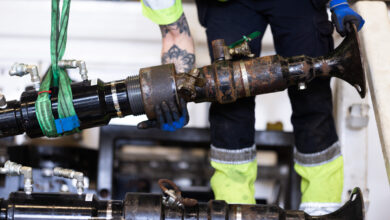If you’re not playing the shale game, it might be time to start

By 2020, it is estimated that a third of the North American natural gas supply will come from shale plays developed in the US and Canada, said Bill Gwozd, vice president, Ziff Energy Group, in a presentation at the 2010 IADC Drilling Onshore Conference & Exhibition on 20 May in Houston. Plays that already see a high level of activity, such as the Haynesville and Barnett, plus a plethora of emerging shale areas are expected to support the growing supply.
The Marcellus, for example, is producing 0.8 Bcf/day, but predicted to increase to a production of 4.2 Bcf/day by 2020. The Haynesville is producing 1.9 Bcf/day and estimated to grow and produce 4.5 Bcf/day by 2020.
When looking at total shale gas supply, however, Mr Gwozd said that it’s not only the high-activity basins like the Marcellus and Haynesville that are in play. Even relatively small plays like the Ohio Shale, which produces 0.7 Bcf/day, add to the supply total.
Canadian plays also continue to contribute as well. For instance, the Utica play in Quebec has the potential to produce 530 MMcf/day. The Horn River in northeast British Columbia is also estimated to increase production from 0.2 Bcf/day to 2.3 Bcf/day by 2020. “You’re going from wells that are basically producing nothing today, and in ten years you’ve added just a couple of points to the North American supply, and it wasn’t on our radar screen five years ago,” Mr Gwozd said.
Together, Canada and the US could produce 24 Bcf/day of natural gas by 2020. “If you haven’t played in the shale game … I suggest it,” he said. “There’s a whole lot of growth activity attached to it.”




